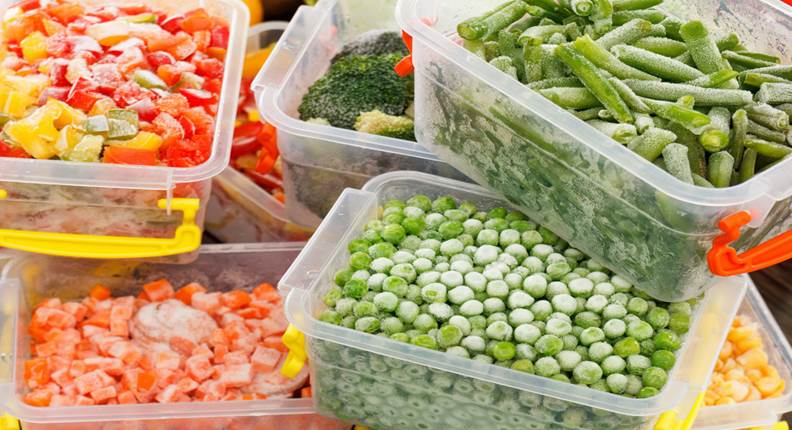Frozen Vegetables Market: Navigating the Future

Market Overview:
The global frozen vegetables market has experienced robust sales in the historical period assessment, exhibiting a growth rate of 3.1% during (2018-2022). In 2023, the market value surged to US$ 38,357.4 Mn, marking a notable increase. This growth trend is anticipated to continue, driven by burgeoning economies and rising disposable incomes among consumers, particularly in the food and beverage sector.
The expansion of the global frozen food industry has been propelled by heightened consumption and demand for frozen meals, especially in emerging economies of the Asia Pacific region such as Japan and India. Factors such as increasing disposable incomes and evolving lifestyle preferences contribute to this growth trajectory.
Europe stands out as the primary demanding region for frozen vegetables, closely followed by North America. The proliferation of large retail outlets, including hypermarkets/supermarkets and other stores, is a key driver of demand for frozen vegetables. Within Europe, France exhibits the highest value CAGR of 5.5%, trailed by Italy and Spain. Meanwhile, in North America, the U.S. commands the largest market share, accounting for approximately 42% during the forecast period. This analysis is provided by Persistence Market Research.
Key Trends:
Health and Wellness: Increasing awareness about health and wellness among consumers is driving the demand for convenient yet nutritious food options like frozen vegetables. As consumers seek healthier alternatives, frozen vegetables, which retain their nutritional value well, are gaining popularity.
Convenience: Busy lifestyles and hectic schedules have led to a growing demand for convenient food options. Frozen vegetables offer the convenience of quick preparation, making them an attractive choice for consumers looking for hassle-free meal solutions.
Sustainability: With growing concerns about environmental sustainability, consumers are increasingly looking for eco-friendly food choices. Frozen vegetables, when properly sourced and packaged, can offer a more sustainable option compared to fresh produce, as they have a longer shelf life and reduce food waste.
Innovative Packaging: Manufacturers are investing in innovative packaging solutions to enhance the shelf life and maintain the quality of frozen vegetables. Vacuum-sealed packaging, resealable bags, and portion-controlled packaging are some examples of packaging innovations aimed at meeting consumer preferences and extending product freshness.
Country-wise insights
What is the Europe Outlook for the Frozen Vegetables Market?
The outlook for the frozen vegetables market in Europe is promising, driven by shifts in consumer consumption habits towards “ready to eat” or easily prepared meals, as well as the substitution of animal-based foods with vegetable-based alternatives. Countries such as Germany, France, the United Kingdom, Italy, and the Netherlands offer significant opportunities for suppliers from emerging markets. There’s a growing demand for nutritious foods among European consumers, who are increasingly seeking healthy and convenient options for breakfast, meal replacements, and snacks, thus fostering the market growth of frozen vegetables.
Category-wise insights
Which Type of Frozen Vegetables is expected to dominate the Market?
Based on type, the frozen vegetables market is segmented into beans, peas, corn and baby corn, broccoli and cauliflower, potatoes, onions, tomatoes, carrots, spinach, and others. Analysis indicates that the potatoes segment is poised to dominate the market, driven by its high value share. This dominance is attributed to the increasing demand from foodservice businesses due to the ease of usage and widespread availability of potatoes.
How are Various Distribution Channels Offering Sales Opportunities for Frozen Vegetable Suppliers?
The sales of frozen vegetables are experiencing rapid growth across various business-to-consumer segments. Among these segments, hypermarkets/supermarkets stand out with a notable growth rate, registering a CAGR of 5.5%. Additionally, specialty stores, convenience stores, and online retail channels are also offering significant sales opportunities for frozen vegetable suppliers.
Key Recent Developments
Product Innovation: Several companies have introduced innovative frozen vegetable products to cater to evolving consumer preferences. This includes the launch of new vegetable blends, organic options, and convenient packaging formats.
Expansion of Distribution Channels: Companies are expanding their distribution networks to reach a wider consumer base. This includes partnerships with online retailers, as well as increased presence in hypermarkets, supermarkets, and convenience stores.
Strategic Partnerships and Acquisitions: Mergers, acquisitions, and strategic partnerships are prevalent in the frozen vegetables market as companies seek to strengthen their market position and expand their product portfolios.
Focus on Sustainability: There is a growing emphasis on sustainability within the industry, with companies adopting eco-friendly packaging solutions and sourcing practices to reduce their environmental impact.
